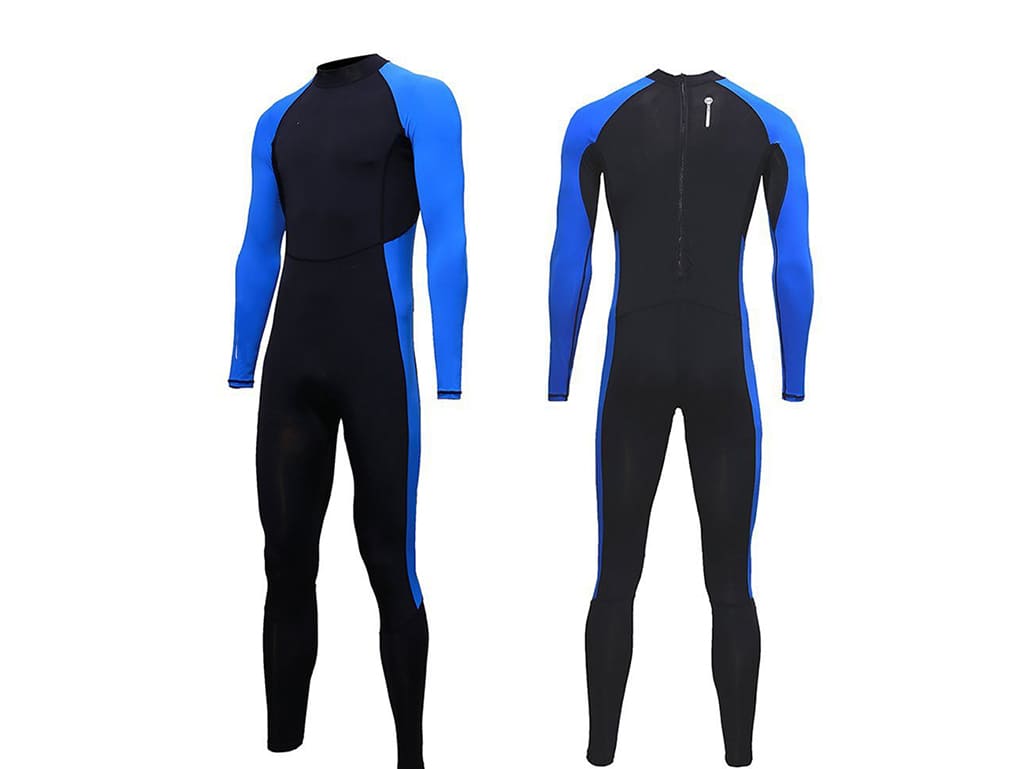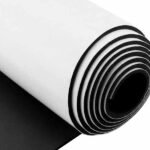Wetsuits are best known for keeping surfers and divers warm in cold waters. But can they also provide warmth outside the water? Many outdoor enthusiasts wonder if wetsuits can serve dual purposes—both in and out of aquatic environments. Understanding the material and its insulating properties will help answer this question.
Yes, a wetsuit can be used outside water to keep you warm. Wetsuits trap body heat by using their neoprene material, which provides thermal insulation in cold weather and damp conditions.
Let’s explore how wetsuits perform on land and why they’re versatile enough for various activities beyond water sports.
Why Do Surfers Always Wear Black Wetsuits?
Surfers are almost always seen wearing black wetsuits. Why is this color so common, and does it serve a purpose beyond aesthetics?
Surfers wear black wetsuits because black absorbs heat from sunlight, providing additional warmth. It also protects the neoprene material from UV damage, making the wetsuit more durable.
Key Reasons for Black Wetsuits
- Heat Retention: Black absorbs more heat, helping maintain body temperature in colder environments.
- UV Protection: Prevents the neoprene from degrading under the sun’s rays.
- Cost Efficiency: Black dye is cheaper and easier to produce compared to other colors.
| Advantage | Explanation |
|---|---|
| Heat Absorption | Keeps the wearer warmer in cold conditions. |
| Material Longevity | Protects neoprene from sunlight degradation. |
| Practicality | Hides dirt and stains, reducing maintenance. |
Black wetsuits are a combination of functionality and practicality, making them ideal for surfers and outdoor enthusiasts.
Will a Wetsuit Keep You Warm in Cold Weather?
Wetsuits are designed to trap heat, but can they keep you warm on a chilly day outside the water?
Yes, a wetsuit can keep you warm in cold weather by trapping a layer of air between your body and the neoprene material. This insulation retains body heat and prevents heat loss to the surrounding environment.
How Wetsuits Work in Cold Weather
- Thermal Layer: The neoprene traps a thin layer of air, which acts as insulation.
- Wind Resistance: The smooth outer surface of neoprene reduces the cooling effects of wind.
- Water Repellence: Prevents water from soaking in, keeping you dry and warm.
Example of Effectiveness
| Temperature (°C) | Wetsuit Thickness (mm) | Warmth Level |
|---|---|---|
| 10–15°C | 5mm | High |
| 15–20°C | 3mm | Moderate to High |
| Above 20°C | 2mm | Light |
With the right thickness, wetsuits can serve as effective thermal gear in colder climates.
How Effective Is a Wetsuit at Keeping You Warm Outside of Water?
Wetsuits are primarily designed for water use, but how well do they perform when worn on land?
Wetsuits are moderately effective at keeping you warm outside of water, especially in damp or windy conditions. Their thermal insulation is less efficient compared to traditional winter clothing designed for land use.
Limitations of Wetsuits on Land
- Breathability: Neoprene is not breathable, which may cause sweating during prolonged use.
- Mobility: While flexible, wetsuits can feel restrictive for some land activities.
- Layering Challenges: Unlike thermal wear, wetsuits aren’t designed for layering.
Ideal Use Cases on Land
| Environment | Wetsuit Effectiveness | Notes |
|---|---|---|
| Windy Beaches | High | Blocks wind chill. |
| Rainy Conditions | High | Keeps wearer dry. |
| Dry, Cold Weather | Moderate | Better options exist. |
Wetsuits are a good temporary solution for warmth on land but are best suited for wet or windy conditions.
Do Wetsuits Work Better in Water or on Land?
To understand the versatility of wetsuits, it’s essential to compare their performance in water versus land.
Wetsuits work better in water because they are designed to trap a thin layer of water that your body heats, creating an insulating barrier. On land, the lack of this water layer reduces their overall effectiveness.
Why Wetsuits Excel in Water
- Water Layer Insulation: Heats trapped water to create warmth.
- Pressure Adaptation: Neoprene compresses slightly under water, enhancing insulation.
- Hydrodynamics: Reduces drag, improving movement efficiency.
Performance Comparison
| Factor | In Water | On Land |
|---|---|---|
| Thermal Insulation | Excellent | Moderate |
| Mobility | High | Moderate |
| Wind Resistance | Low | High |
While wetsuits perform exceptionally in aquatic environments, their effectiveness on land depends on the conditions.
What Are the Best Activities for Using Wetsuits Outside Water?
Wetsuits can be surprisingly versatile for non-aquatic activities. But what are the best situations for using them?
Wetsuits are ideal for activities such as beach sports, kayaking, or cold-weather camping where wind, moisture, or water exposure is likely. They provide warmth and protection in wet and windy conditions.
Land-Based Activities for Wetsuits
- Kayaking: Protects from splashes and wind chill.
- Beach Volleyball: Keeps players warm during cooler weather.
- Cold-Weather Camping: Serves as a secondary thermal layer in damp environments.
Activity Suitability
| Activity | Wetsuit Benefit | Additional Notes |
|---|---|---|
| Kayaking | Water repellence | Choose 3mm+ for cold. |
| Fishing | Warmth and durability | Ideal for wading. |
| Hiking Near Water | Protection from wet terrain | Best for short hikes. |
Wetsuits provide practical solutions for specific outdoor scenarios beyond water sports.
Conclusion
Wetsuits are not just for aquatic adventures—they can also provide warmth and protection in various land-based situations. While they excel in wet and windy conditions, their effectiveness is limited compared to clothing designed specifically for dry environments.
At Szoneier, we specialize in manufacturing high-quality neoprene wetsuits tailored for both water and land use. With years of experience, we offer customizable options for brand owners, wholesalers, and retailers across Europe and North America. Our wetsuits combine durability, thermal efficiency, and modern designs to meet diverse needs.
Contact us at info@neoprene-bag.com or visit www.neoprene-bag.com to explore how our products can enhance your brand’s offerings and meet your customers’ demands.











